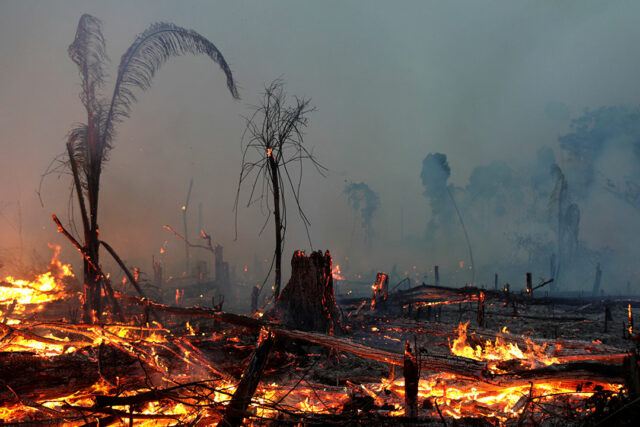Jerome Hayden “Jim” Powell is neither an academic economist as some would expect, nor an economics practitioner in the US Fed’s research department, or in a New York investment bank, or even the treasury. When he was appointed as the 16th chair of the US Federal Reserve in 2018, I did a quick search of the web that showed he is an American lawyer and an investment banker. He studied politics in Princeton University and earned his Juris Doctor (JD) from Georgetown University Law Center, both in the 1970s.
Yes, Powell is a lawyer. But he is not the first lawyer to serve as a central bank governor. We recall another lawyer, Sir Gordon Richardson, governor of the Bank of England in 1973-83, who visited Manila in the early 1980s to address the Southeast Asian Central Bank Governors meeting in Baguio. Like Richardson, Powell started as a lawyer, worked as a clerk at the US District Court for the Southern District of New York, and practiced law for several years.
And like Richardson, he also abandoned law for banking.
In 1984, he embraced investment banking, first at Dillon, Read and Co., and later worked his way up in several financial institutions that included partnership at The Carlyle Group. He led its Industrial Group within the Carlyle US Buyout Fund. He briefly served as assistant secretary for financial institutions and undersecretary for domestic finance in the early 1990s at the Treasury under President George Bush, Sr. He then founded a private investment firm, Severn Capital Partners, that specialized in finance and investments in various industries.
His experience in central banking started when he was appointed a member of the US Fed Board of Governors in 2012 and promoted to chairman, succeeding now Treasury Secretary Janet Yellen.
Known as a consensus-builder and problem-solver, Powell was also commended for his role in helping combat the financial fallout of COVID-19 by accommodative monetary policy. He argued then that supporting the US Fed’s dual mandate of price stability and full employment should take precedence over potential asset price inflation. He was branded by Bloomberg as “Wall Street’s Head of State” due to the extremely influential monetary policy under his watch and the resulting unprecedented profitability for Wall Street.
We cannot forget Powell’s turnaround in December 2021 when he dropped his view about US inflation as being transitory. “I think it’s probably a good time to retire that word and try to explain more clearly what we mean.” By that time, inflation had soared to 6.8%, the highest point since 1990. He admitted that “the risk of higher inflation has increased.” It was then that the US Fed hinted that quantitative easing and mortgage-backed security purchases had to be curtailed.
US inflation was more persistent than the US Fed had predicted.
This is the other side of Powell: he is capable of embracing change, in his career and in his views. In his taped message before the 2024 graduating class of Georgetown University Law Center on May 19, Powell not only reminisced over his family ties with Georgetown — having graduated there himself, following the footsteps of his own father, and his two daughters following the first and second generations — but also the hard work and the fun in the great campus in Washington, DC’s Georgetown. He enjoyed watching movies and dancing the steps of The Rocky Horror Picture Show, particularly of “The Time Warp.”
On embracing change, Powell informed the Georgetown law crowd that after over 40 years since his own graduation, fundamental changes have taken place both in the workplace and in society in general, driven by technology. The pace of change would not slow down, rather it would gather more pace. He advised his audience to consider what practicing law would look like in 10-20 years. If for anything, one should be agile and prepared to take risks. Experience should be valued.
Change is what leadership is all about. And no one can ever say he is prepared to take on a leadership role because the first thing that strikes at the heart at such a point is self-doubt. As if he was addressing himself, Powell admit-ted that when one is challenged to do new things, it is safe and fair to assume he is going to make some mistakes. Nothing wrong with that, but that will be most valuable when one learns from them and never repeats the same mistakes. Dwelling excessively on past blunders is a no-no for Powell. It’s always a clean slate on which new wins can be inscribed.
Indeed, Powell exhibited this attitude when he finally deleted “transitory inflation” from his vocabulary. He admitted he should communicate better to his constituents if monetary policy is to be effective, even to the pedestrians. Change is fundamental to deliver on such an elusive mandate as price stability and full employment.
The US Fed Chairman has a broad perspective on what he called a “wide variety of potential paths.” Having left law practice for investment banking, he stressed to the law graduates that law education “teaches you to think clearly, analyze thoroughly, and understand all sides of an argument.” His law background made him choose to work in an investment bank in New York headed by former Treasury Secretary Nicholas F. Brady, the former US senator from New Jersey and after whom the Philippines’ Brady bonds were named. At the same time, he mustered enough boldness, even as the most junior of staff, to approach Brady and indicated to him that he ultimately wanted to do public service. “I said that if you need someone to staff you on anything you do in Washington, I’m your guy.”
Powell was never discouraged hearing Brady responded with a simple “Great, thanks.” He was assigned a challenging task after a few months, and this was to defend an oil company from a hostile takeover. He delivered on his assignment, and when Brady was appointed Treasury head, he took Powell along and “opened the door… to higher levels of public service.”
Chair Powell talked about initiative and thinking beyond the law graduates themselves. “Each generation has an obligation to move us closer to the ideal, as embodied by the famous image of blindfolded Lady Justice holding the scales.” He concluded his address by quoting former US Fed Chair Ben Bernanke who said; “Those who are luckiest… also have the greatest responsibility to work hard, to contribute to the betterment of the world, and to share their luck with others.” While for some, it’s beyond luck, the point is to share one’s blessings.
The US Fed Chairman can speak with forthrightness because time and again, he has demonstrated independence of mind and heart. No amount of criticism and finger pointing by former US President Donald Trump that the US central bank was behind the sharp slowdown of the US economy affected him. He refused to cut interest rates despite Trump’s regular negative tweets against the Fed and its chairman.
In response to Trump’s pressure, Powell asserted that he intended to serve his full four-year tenure. Trump could not make him leave his post. Current President Joe Biden decided to uphold the independence of the US Fed and its chairman by reappointing him, a Republican, for another four years in 2022. This was enough of a pillar for Powell to lean on and remain independent in pursuing monetary policy.
Powell could very well maintain his policy independence because he chose to serve the American public. He nurtured public service as early as when he was just a budding investment banker. Based on public filings, Powell is independently wealthy, having a net worth estimated at about $55 million. He has served on the boards of charitable and educational institutions including a public charter school.
On Feb. 8, 2023, Fortune reported on leadership, CEO salaries and executive compensation. On its coverage of the US Fed Chairman, the title said it all: “The most influential figure in America’s economy earns just $190,000 a year — and he says that’s fair.”
Diwa C. Guinigundo is the former deputy governor for the Monetary and Economics Sector, the Bangko Sentral ng Pilipinas (BSP). He served the BSP for 41 years. In 2001-2003, he was alternate executive director at the International Monetary Fund in Washington, DC. He is the senior pastor of the Fullness of Christ International Ministries in Mandaluyong.













